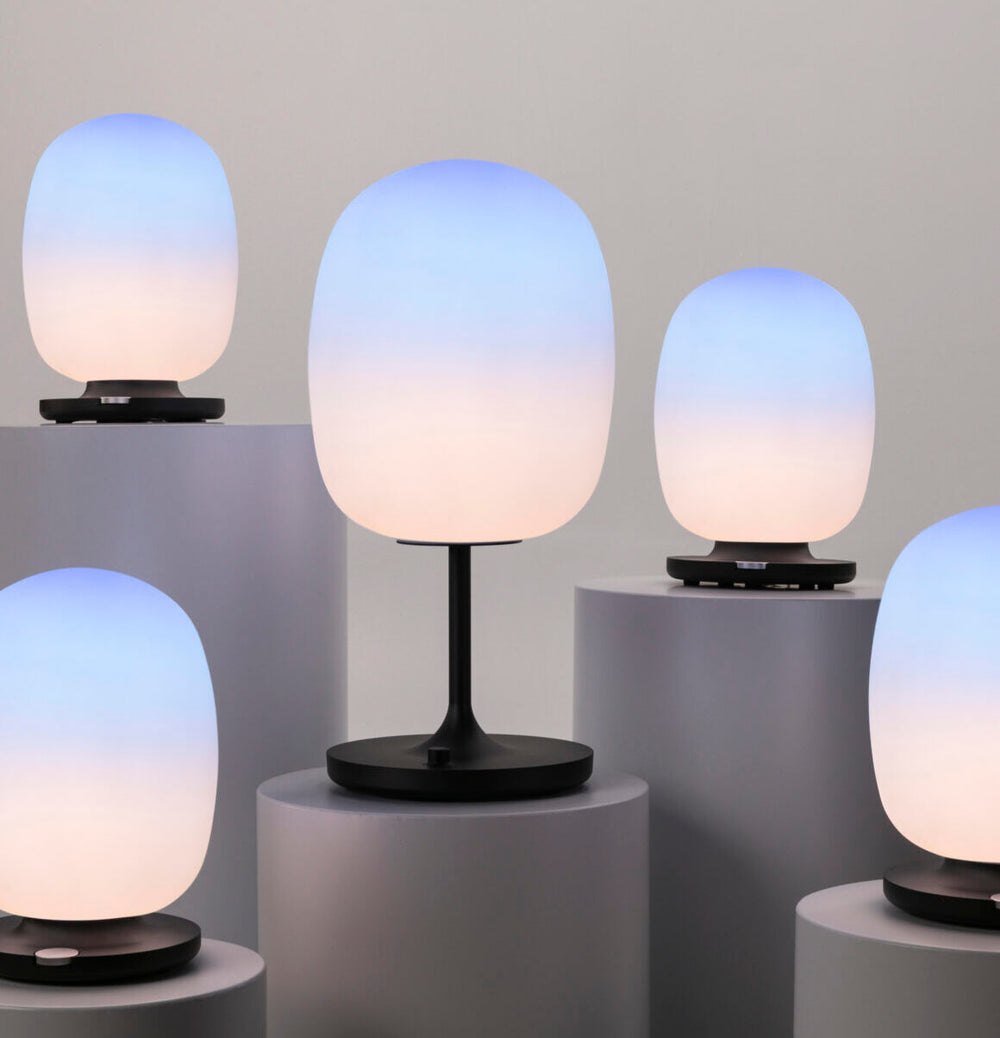Discovering the Best Color Light for Sleep: A Comprehensive Guide

Ok so there's no best color light for sleep while you sleep because we need complete darkness to have good sleep. But, there is a science behind sleep and color lighting throughout the day that can promote a healthy sleep cycle.
While we often focus on factors like mattress quality and room temperature, the impact of illumination on sleep quality cannot be underestimated. Dive into the science behind sleep and color lighting to determine the best color light for promoting a healthy sleep cycle.
Understanding Your Sleep-Wake Cycle
The circadian rhythm is also known as your body's internal biological clock that regulates your sleep-wake cycle. It also affects your alertness and sleepiness throughout the day. Now, how does the circadian rhythm stay in rhythm? The answer is by light exposure, particularly blue light. This light targets melanopsin, a photopigment in our eyes, then the melanopsin sends signals to our brain, telling us when to be awake and when it’s time to sleep.
Melanopsin is the most responsive to blue light that peaks at a wavelength of 490nm (remember that). This means that at 490nm, melanopsin signals to the brain that it’s daytime and we should be awake. Throughout the day, light wavelengths fluctuate and melanopsin stops at around 590nm meaning that your body is recognizing that it’s no longer daytime and you should be getting ready for bed.
Blue Light's Role in Sleep Disruption
Long exposure to blue light at night can disrupt your circadian rhythm by suppressing the production of melatonin, a hormone that helps regulate sleep. It can confuse your body's internal clock and make it challenging to fall asleep at night. However, if you’re getting enough bright blue light during the day, this will help you sleep easier at night. Again, it all ties back to your circadian rhythm and making sure you’re getting the right light at the right time.

The Best Color Lighting for Sleep
- Amber: Remember how we talked about wavelengths? Amber light is ideal for sleep because at 590nm melanopsin stops and signals to the brain it’s time to go to sleep soon. The blue light wavelength is almost non-existent, so it doesn’t suppress melatonin.
- Blue: During the evening hours, it's crucial to minimize exposure to blue light. If you absolutely need to be using screens at night, break out your blue light-blocking glasses or use "night mode" settings to reduce the amount of blue light emitted. More importantly, make sure your room is best suited for healthy evening light spectrum, so you don’t negatively affect your melatonin production.
- Red: Red light for sleep is ideal, but not always comfortable. It contains no blue light, so in theory it’s the best light for sleep. This light is best for night-shift workers to help counteract falling asleep without affecting their melatonin levels1.
- Purple: Purple light is a mix of red light and blue light. It’s not as harmful to your sleep, but it’s still not the best color light to use when you’re trying to get your sleep-wake cycle in sync.
- Pink: Pink light is the least common color for light and also the least studied, so there’s not a lot of research done on how it can affect sleep. We do know it’s kind of like purple, it’s not ideal for your sleep-wake cycle.
- Green: If you’re using green light for sleep, it’s almost just as bad as using blue light. You’re still getting wavelengths that make your body think it’s time to be awake.
"As it turns out, no light is the best color light for sleeping. You want to sleep in complete darkness."
Creating a Sleep-Friendly Environment with Light
To create an environment for restorative sleep, it's not just about the color lighting at night; it's about how you’ve interacted with light throughout the entire day.
- Start your mornings with a walk or sit outside for at least 20 minutes. Early morning light triggers melanopsin and signals the start of your sleep-wake cycle.
- Use SKYVIEW if you’re indoors all day and aren’t able to get natural light. SKYVIEW will make sure you’re receiving the right light at the right wavelengths throughout the day, so your body is ready for sleep at night.
- Blackout Curtains: Pair your chosen lighting with blackout curtains to ensure that your sleep environment remains dark and conducive to rest at night. If you can automate them on a schedule, make sure they’re open in the morning and evening before you go to sleep. It’s important to get twilight lighting.
- Limit Screen Time and Blue Light Exposure: Avoid screens and electronic devices at least an hour before bed to minimize exposure to blue light. It's also important to limit blue light exposure from other artificial light sources like your standard LED lighting. Make sure to turn off your lights 2 hours before bed.
The color of lighting you choose can significantly impact your sleep quality. By opting for warm, soothing tones and minimizing exposure to blue light in the evening, you can create a sleep-friendly environment that supports your circadian rhythm. Remember, it's not just about the color of the lighting; it's also about the invisible wavelengths you can’t see that affect sleep. Prioritize your sleep environment, and you'll be well on your way to enjoying nights of restful sleep and refreshed mornings.
Figueiro, M. G., & Pedler, D. (2023). Red light: A novel, non-pharmacological intervention to promote alertness in shift workers. Journal of safety research. https://www.ncbi.nlm.nih.gov/pmc/articles/PMC8059068/
Shop SKYVIEW Products
Shop Now

